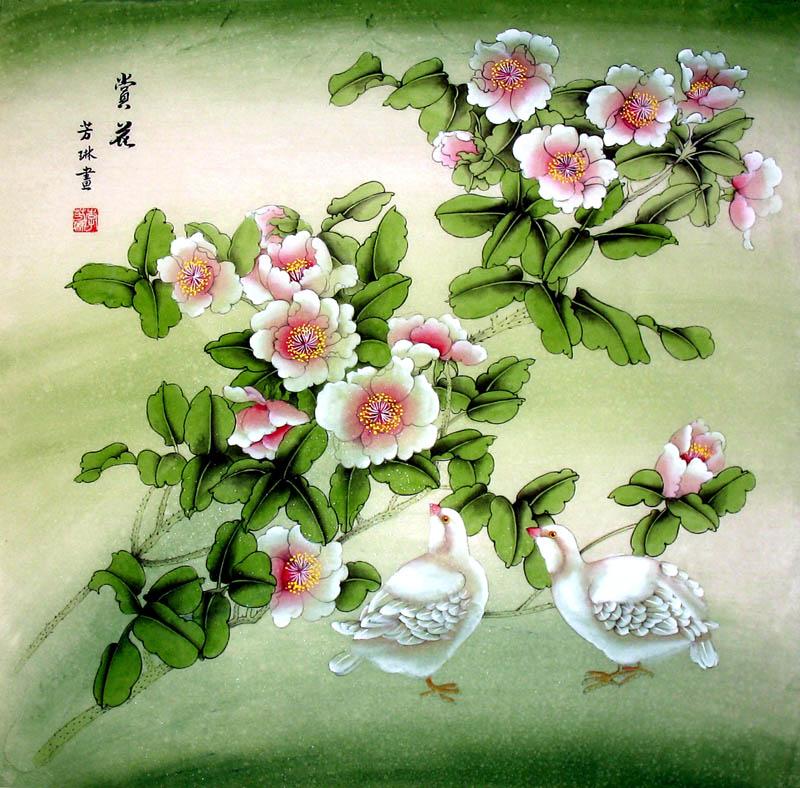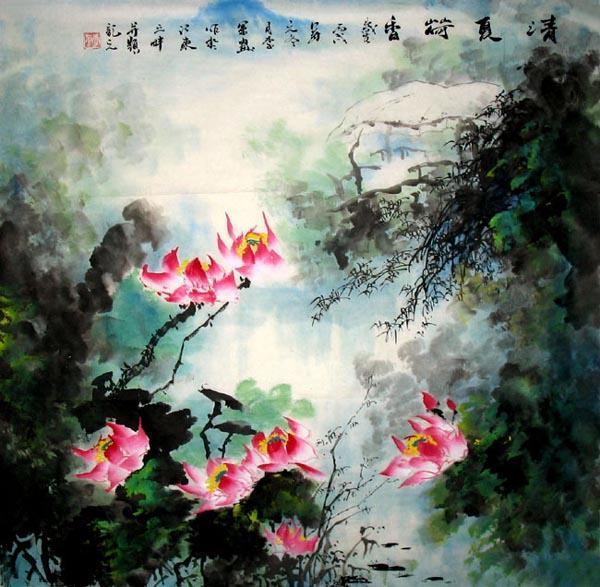Flowers and leaves
Given the importance of nature to the Chinese, it is hardly surprising that flowers feature in many of their paintings.
Yet in the beginning, the majority of paintings were of figures and landscapes. Gradually this changed. Flowers symbolize many qualities , such as loyalty or filial obedience (bamboo), piety or perfection(orchid), unworldly scholar or retirement(chrysanthemum), and fortitude or strength (plum). These are known as the "Four Gentlemen." In many books you will find alternative descriptions- it depend how the scholar artists of a particular period wished to portray the plant and the "political statement "they wished to make.
 Plants were linked with the seasons, too: peony for spring, the lotus for summer, chrysanthemum for fall, and plum for winter. The plum was also linked with bamboo and pine in a group called the "Three Friends in Winter." The rose, on the other hand, was associated with all of the seasons. Other paintings can feature the "Four Friends of Flowers"- swallow, oriole, bee, and butterfly. With these traditions to promote the artist, there is plenty of inspiration.
Plants were linked with the seasons, too: peony for spring, the lotus for summer, chrysanthemum for fall, and plum for winter. The plum was also linked with bamboo and pine in a group called the "Three Friends in Winter." The rose, on the other hand, was associated with all of the seasons. Other paintings can feature the "Four Friends of Flowers"- swallow, oriole, bee, and butterfly. With these traditions to promote the artist, there is plenty of inspiration.
These facets of Chinese brush paining add an enormous amount ofinterest for the enthusiastic painter. But there is no reason why other flowers or objects cann't be portrayed in this style of painting. In fact , it is exciting to work out the techniques and color loading. In Western art it is usual to paint with the flower and leavesin front of you. Many Chinese artists study theflower in great detail, maybe over a long period of time, and finally go into the studio to transfer observations and feelings onto the paper from their memories. If you are uncertain about working in this way,  after picking the plant, placethe flower behind you so that you do not "paint every petal and leaf," but rather paint the "essence" of your subject. This also applies to photographs and books. Above all, these should be a balance of elements. Remember to leave somespace around the subject, and to "manage the white." This is one reason why you need to use the paper at the final size of the painting, rather than cut it down afterward.
after picking the plant, placethe flower behind you so that you do not "paint every petal and leaf," but rather paint the "essence" of your subject. This also applies to photographs and books. Above all, these should be a balance of elements. Remember to leave somespace around the subject, and to "manage the white." This is one reason why you need to use the paper at the final size of the painting, rather than cut it down afterward.
Flowers
Flowers painted in the Chinese style are extremely popular in the West. They can be painted in a variety of styles, both simple and cpmplex. Extreme simplicity means that each strokes must be very good, while the Gongbi, or meticulous, style needs excellent, fine brushwork. Some artists specialize in one style or the other, and academies in China teach the Gongbi style as part of a long and rigorous training, leading to better skills in the Xieyi style. In the West, due to the lack of academy-trained teachers and Western preferences (as well as patience levels!), the process is often the other way round.









